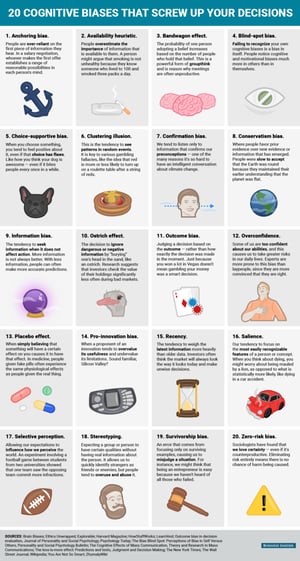How to Hire: A Primer
Big Ideas | Tips and Tools | People Operations | Hiring | Human Resources

We’ve entered a New Year — the future is upon us! It’s that time when people take stock of their life goals and think, time to change things up. As an employer, you can ignore this reflection point and pretend people aren’t thinking about it, but chances are at least a handful of those who work for your organization are dusting off their resumes and using this mile marker to take the next step in their careers. Happens every year. As an employer, it’s a good time to think about what you need to do to find that next stellar staff member when a position opens up.
Early in my career, I used to think hiring staff consisted of:
- Someone leaves (Ah, really?!),
- Dig up the last job posting we published, or go online and borrow one for a similar position from a colleague organization (Thanks, Alvin Ailey American Dance Theater!)
- Sift through resumes looking for people with impressive schools (Harvard), companies (Kennedy Center), or interesting activities (college disc jockey),
- Ask candidates questions that I had myself been asked in job interviews (What’s your greatest strength?), or seen on TV (Why is it that we’ll eventually need to fire you?),
- Let my gut be the guide (Could I spend the day stuck at the airport with this person?),
- Hire them (Congratulations!); and,
- Wonder why it wasn’t working out to the point of frustration where they quit or I fired them (Ugh).
When I was firing every other person I hired, it struck me that there had to be a better way. It couldn’t all be a crap shoot. There had to be a way to at least increase the odds of success. How could we be more certain that the people we were hiring were the ones we needed to make a positive impact and move our company forward.
It was at this point in my career that I started consuming countless books, articles, videos, and interviews by people who did this thing for a living. People whose companies spent years and millions of dollars studying how to structure a process that separates the signal from the noise, if you will. I quickly realized, I’ll never have a team of PhD statisticians studying every conceivable option tested on tens of thousands of people, but I could find out what these professionals discovered and then use that knowledge to build a better process for me and my own organization.
Let’s state it for the record: Getting a hire wrong sucks. It sucks for everyone involved — the person we hire, their coworkers, the “hiring committee,” the manager, the entire organization. It sucks less for the lost money (although make no mistake “failed hires” cost us money), but it’s more about the opportunity costs. The time and energy spent on the process, that we now need to do all over again, versus spent on something else that benefits our organization. Failed hires can crush a team’s moral when they train a new staff member and then bang their heads against the wall for weeks, months, or sometimes (God help you) years when things don’t start firing on all cylinders. And, it ultimately can crush the new employee, who was previously a fan of the company, when they’re told that it’s not working and they need to move on.
Hiring is less about the questions you ask in the interviews — although those are certainly an important component — and more about the preparation and structure you set to guide the process. If you think great hiring begins with, “Where do you see yourself in five years?” you’ve missed a few crucial steps along the way.
What I’m going to recommend takes work. It’s a philosophy and a new way of working. Don’t want to do it? Go ahead, be my guest. Keep the same old crap shoot going. Your colleagues in the field will be more than thankful to hire the stellar candidates you overlook.
Hiring is a marketing campaign for your company.

Hiring is an marketing campaign aimed at getting people interested and excited to work for your organization. Nowadays it’s called “employer branding.” The good news is that you’ve been exercising some of these muscles every time you spend time and energy figuring out the best messaging and medium to get people excited about attending your events and donating to your company. Savvy applicants (just like savvy donors) — often the ones you really want working for you — have been keeping an eye on your organization well before you hit “Publish” on that job posting. They’ve been Internet stalking you, asking around, and probably secret shopping an event or two of yours. How was I treated when no one had any idea who I was? Was the event and artwork interesting and worth my while? What voice do they use in communications — IRS or that friend who really gets me?
Everything you print, do, or say during the process to attract and hire people communicates something about your company. Can you read the entire job posting without nodding off? It doesn’t need to be encyclopedic, or written so only God is qualified. Use the job posting to get your ideal candidates interested and unveil more during the interview process. Smart people get it. Also, people don’t read. (Thank you if you’ve read this far into my post.) If you could only Tweet your job posting, what would the 140 characters contain? Remember, your job posting is an advertisement. Think a job posting that’s more Internet dating profile and less scholarly dissertation. You’re trying to get people excited and interested to do something, not answer every conceivable question. You’re trying to connect with candidates who believe in what you do and could see themselves contributing to, and thriving at, your organization.
Does your posting reflect your company’s personality?
What does the job posting say about what it’s like to work at your organization? A quick glance at the job boards say that it’s incredibly boring, stuffy, and uninteresting to work for the cultural sector. Where’s the humor, the quirky, the creativity, the caring? Maybe you do work for a boring, stuffy, and uninteresting arts organization, but my hunch is that those places are in the minority. (I’ve gone drinking with too many arts administrators over the years to believe that boring and stuffy is the norm.)
Lastly, unlike events where most fans can score a ticket, in hiring you often only get to make one fan really happy and potentially piss off the rest of the people who previously loved your company. What can you do during the hiring process to make people even bigger fans of your organization, even if they aren’t offered a position? This could be as simple as giving candidates a tour of your office, letting them chat one-on-one in a “non-interview” context with someone who’s in a similar position to the one they want, or just emailing them to say it was great getting to know them and that the search has concluded. Think about it more like the process you use cultivate donors and less how you might correspond with Verizon service repair after a week without the Internet.
Be honest.
This requires some introspection, and some asking. What’s it really like to work for your organization? What do people value most? Enjoy most? Dislike most? If you say “we party every day and laugh nonstop,” but your company culture is quiet and buttoned up, you’ll attract the wrong candidates from the start. We’re often in too big of a hurry to fill a vacant seat that we throw being intentional out the window in favor of crafting nothing more than a generic and uninteresting post about the position. Is it any wonder a common refrain is that we often end up with “uninteresting” candidates who aren’t “quite right” or “a fit”? These individuals might actually be the perfect fit for the job posting and the process we put candidates through.
Build a high-performing team

People, teams, and organizations grow and develop in new and different ways and along various timelines though. Someone who might have been a stellar fit yesterday for the organization, might not be what the organization needs to achieve its goals tomorrow. Same with a person’s goals and challenges. These change over time. This is one of the reasons why people leave companies. I’m on record for my view of the responsibilities organizations have to invest in their people, so please don’t interpret any of this next part as me advocating for burning through people and then swapping them out.
We think nothing of professional sports teams trading and bringing on players to craft a high performing team to increase their odds of winning. That’s what sports teams are supposed to do, win, right? What does “winning” look like to your organization, and what kind of team do you need to assemble to increase your chances of achieving that objective? Before posting for that open Development Associate role, this takes pulling back from the page to see who’s on the field of play. Maybe you have some people who have developed new skills that allows you to shift them around, obviating the need for a Development Associate, but allowing you to bring on that marketing person everyone has been hankering for. Hiring a carbon copy of the person who’s leaving — even if they were a rockstar — is also missing a huge opportunity. Sometimes the game changes. Sometimes the field on which it’s played changes.
High performing organizations and teams cultivate a diversity of voices and healthy conflict among them. Don’t take my word for it, there’s plenty of research out there to back up that statement. Once you have one Tim Cynova you don’t need another one. Tim Cynova does a decent job of being Tim Cynova, and another one just takes a seat that could be occupied by a different voice. There are 7 billion people on this planet. There are more people out there who could be superstars at your organization, you just need to use a little elbow grease to find them.
When looking for those superstars, don’t abdicate your own judgment. Just because someone went to Harvard, worked for the Kennedy Center, or came with a recommendation from a trusted colleague, doesn’t mean you shouldn’t vet them just as you would anyone else. I don’t use someone’s else judgement as a proxy for my own. Nobody except those who currently work at Fractured Atlas know what it’s like to currently work at Fractured Atlas. Former staff members and those outside of the organization might have a good idea of what it takes, but the nuances of team composition, skill sets, and projects in the queue, are enough of a challenge to balance from inside the company let alone from an armchair quarterback’s vantage point. Stellar changes over time depending on the circumstances. And stellar staff aren’t necessarily interchangeable. Just as your company’s stellar isn’t necessarily Fractured Atlas’s stellar, so too Fractured Atlas’s stellar isn’t necessarily Google’s, or Zappos’s, or Zingermans’s stellar, and vice versa, and so on. Recommendations, however high praise, merely should call your attention to the candidate, not put them on the fast track for hiring.
Your gut’s not that great
Do you hire all day, every day? Yes? This post isn’t for you. No? While it sometimes feels that way, I even don’t, and I hire a lot. Leave the well-trained talent acquisition gut to the day-in, day-out professionals. For those of us mere hiring mortals, we need to check our gut and beware of our biases. The biases that make us think we’re better at hiring than we are, and the biases (conscious or unconscious) that cause us to eliminate stellar candidates for the wrong reasons.

Hopefully you’re not in the “I don’t have biases camp.” Everybody has them. Knowing what they are allows you to be mindful of how they influence your decisions and help you safe guard against them when making decisions. I’ve found three things quite good in helping me identify my own biases. The first is this handy graphic of 20 Cognitive Biases That Screw Up Your Decisions. The second is Harvard’s Implicit Attitudes Test. (Beware, it can be a sobering and humbling activity.) The third is a video by Google Ventures of Unconscious Bias in the Workplace. I highly recommend all three.
Think about this. How many of us include “High school or college diploma required (or even preferred)” when posting a position? Why? We’re using that as a proxy, right? If a candidate could graduate from college they’ve cleared an important bar necessary for this Administrative Assistant position? (Look, I’ve been there, and recently removed mention of educational preference or requirements when posting jobs at Fractured Atlas.) Even “X years experience preferred/required” is fraught. Some people have a knack for doing a really bad job for a really long time. Others change the world before their 21st birthday.
Contribution trumps age, length of tenure, or whether they graduated from high school.
Why can this be a bad proxy? Think about it. Two 25-year-olds, one graduated from high school and college, the other didn’t. It’s not like the latter’s life was paused. They woke up every morning and did something, just like the person who graduated from school. What kind of experiences did they have during that time that will add depth, and diversity of experience and thought to your organization? They might have attended college but failed to graduate due to a family tragedy. They might not have had the means to attend college but instead worked for a law firm gaining invaluable knowledge and experience. Figure out how to create a talent acquisition environment that allow you to see how someone thinks, approaches challenges, works with a team, and ultimately delivers. This is what’s important. Not their name, their address, or whether they graduated from high school or college.
A word about the value of past experience. I once read of a study that followed highly compensated investment bankers. It was tracking those rockstars in the field that commanded massive compensation packages when moving from one firm to the next. Essentially, it found that in most cases, those rockstars never achieved anywhere close to their former glory at their new firms, even though they were paid even more money. That was, unless they brought their team with them.
When you think your gut is great, you’re often placing more weight on the times you “got it right” than on all of the times you got it wrong. So, if you’re not supposed to trust your gut, then what? In addition to being aware of your biases, one way to do this is to team hire with people who have different experiences and ways of thinking. You can each challenge the others’ assumptions and conclusions, and ultimately produce a more rounded picture of each candidate.

Post-it to stay on track.
I learned from my dancer friends in college that when they did spins on stage they used a light in the back of the hall to spot themselves. I was a trombonist, so the concept of spotting was foreign to me. My chair and music stand always stayed in the same place throughout the performance. Why spot? Because if you don’t, you can end up wildly off from where you started.
When reviewing application packets, I took this concept of spotting and turned it into 3–4 things written on a Post-it note. What are the 3–4 things that I’m looking for in this review round? Customer service experience? A cover letter that demonstrates personality and an understanding of the organization? Filmmaking background? Before I read each application, I review that Post-it note. If I don’t, I find myself shifting over the course of reviewing 300+ application packets. Where I was evaluating the first fifty or so by certain criteria, something started to shift and I’m now weighting packets 50–100 differently. Starting back with that Post-it each time helps me stay consistent through each evaluation round. I can then change the Post-it and do subsequent rounds if I need to further winnow the list of candidates before starting the interview process.

Structured interviews
To insure you’re evaluating each candidate with similar information, and steering clear of conscious or unconscious biases, use a structured interview. In a structured interview, every candidate is asked the same questions in each round. If you’re not doing this, how do you know you’re comparing “apples to apples?” I’ve had perfectly lovely, engaging conversations with people I think would have been horrible fits for a position. I can shoot the shit with someone about bourbon, burritos, or biking for days, but if they aren’t an effective fundraiser, all that friendly chatter has an expensive price tag when they’re hired for that Development position. I’m not saying you can’t veer off the script for a follow-up question or two, or need to conduct interviews with the humanity of a robot (remember, the candidates are evaluating whether or not they can see themselves working with you the bulk of their waking hours), but sticking to a script will insure you’re able to evaluate like data for each candidate.
Creating a structured interview begins with detailing the duties of the position and traits of the successful candidate. The next step is figuring out what questions and/or exercises will allow you to capture relevant data. Then structure the process. At Fractured Atlas, everything we ask of a candidate — from the format to submit materials to the reference check process — has a purpose. It has a purpose specific to our organization and the position, not necessarily a universal search process. (See earlier disclaimer about how this is work, but work that yields better results.)
When creating a structured interview, say, these are the six questions we’re going to ask everyone on the phone interview. These are the 15 questions we’re going to ask them in the first in-person interview. Then, ask yourself: Why are we asking this question? What do we hope it will tell us about the candidate’s character and ability to do the job? Leverage situational questions: Tell me about a time… (e.g., your project management skills saved the day; you were given a project where there was a great deal of ambiguity; you had to raise $1,000,000 from scratch). Don’t just let someone get off the hook with, “I took a fundraising course in college.” Have them explain how they used those fundraising skills in real life. (For all I know, they scored the worst grade out of the entire class. Or, scored the highest but are unable to translate that theoretical knowledge to the practical.)
Interviewing is a two-way street.
Leave plenty of time for candidates to ask you questions. Their questions are a great opportunity for you to learn about them and how they process information. These are the people who will potentially work for your organization, be brainstorming in meetings, be participating in healthy conflict, be handed projects to accomplish. What kinds of questions do they have? Broad, lay-of-the-land type? Specific nuts-and-bolts type? Insightful and thought provoking? Run of the mill? Are they methodical in their questioning or all over the map? No questions at all? Usually a red flag. Really, you don’t have any questions for me? You know absolutely everything about this position, organization, people, current projects, future projects, epic fails, overwhelming successes, our hopes, our dreams, and desire for an office Velcro wall? Will this be someone who settles into the position and then churns away on a project, in the wrong direction, way past the point at which they should have asked for clarification or help? Maybe. Beware of the candidate with no questions.
Don’t get too attached to candidates. Smart, informed candidates are usually more willing to walk away from you than you are to nix them from the process. While it sometimes results in “ideal” candidates withdrawing from a search (been there), in the long run it’s for the best. Also, what are you going to do? If someone perceived something about the people, the organization, or the work that caused them to not want to proceed, or believes a competing offer is more attractive, it’s usually not worth running after them. Usually. Just don’t get too attached.

Be patient. Don’t just settle.
This is a tough one, even for me sometimes. It’s the “they’re good enough, I just need a body doing this work yesterday.” Wait. The right candidate adds exponentially to your organization, while settling seldom moves you forward. I’ve never cut loose candidates, even really promising candidates, and not found a better one in the next search. It’s painful, especially when I know that a candidate likely could have been great, but we already have that person, that kind of great, in our organization. When you’re building a star team to accomplish great work you want people who add things you don’t currently have on your team. You don’t want people who think and act like you, or a carbon copy of someone you already have on staff. Be patient and search with intent.
The work we do in the cultural sector is challenging, intense, and deeply meaningful and transformational. The work to build stellar teams is just that, work. Make no mistake though, you’ll do this work whether you want to or not. The alternative shows itself in the form of a revolving door, mismatches, and failed hires. Take the time to build a team of stellar people to increase the odds of success. We all benefit from that work.
About Tim Cynova
Tim wears a multitude of hats, all in service of creating anti-racist workplaces where people can thrive. He currently is co-CEO of Fractured Atlas (an entirely virtual organization with staff spread across multiple states and countries) and a Principal of the consulting group Work. Shouldn't. Suck. He serves on the faculty of Banff Centre for Arts & Creativity and The New School teaching courses in People-Centric Organizational Design; he's a trained mediator, and a certified Senior Professional in Human Resources (SPHR). Earlier in his career, Tim was the Executive Director of The Parsons Dance Company and of High 5 Tickets to the Arts in New York City, had a memorable stint with the Cincinnati Symphony Orchestra, was a one-time classical trombonist, musicologist, and for five years in his youth he delivered newspapers for the Evansville, Indiana Courier-Press. Also, during a particularly slow summer, he bicycled 3,902 miles across the United States.


